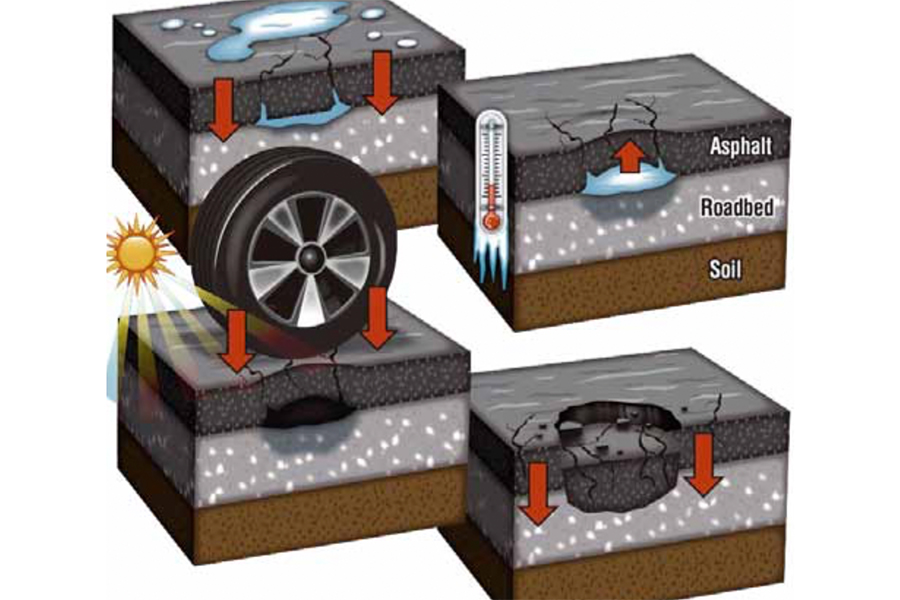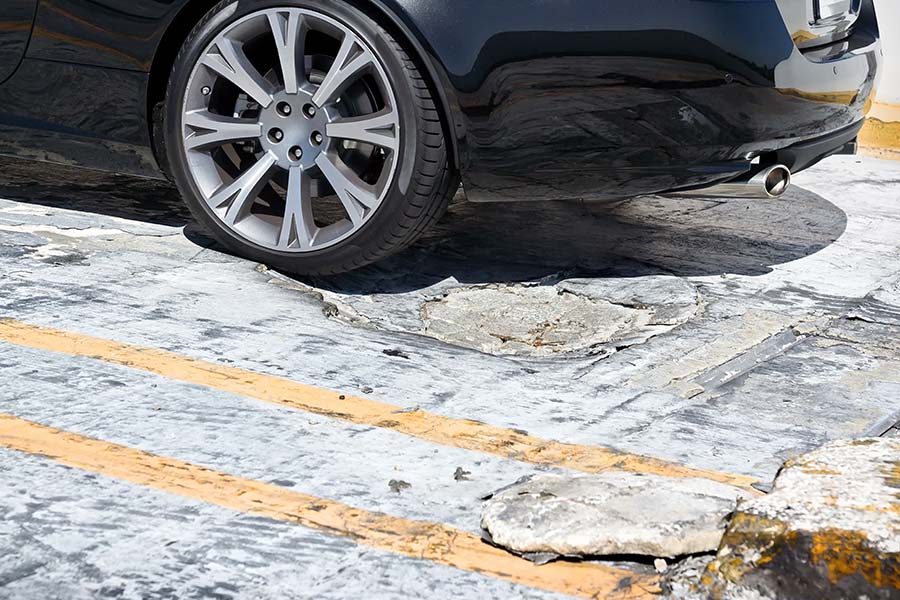Potholes are the result of un-repaired cracks and deteriorated pavement. Typically caused by moisture intrusion, potholes are an annoyance to vehicle traffic and a hazardous tripping problem for pedestrians. If your parking lot, roadway, or driveway currently has potholes in it, filling them immediately can help you avoid potential liability in a cost-effective manner.
To help you further understand pothole repair and its importance, we’ve put together these facts. Keep reading below and contact your local sealcoating contractor if you have questions about how to properly care for your asphalt pavement.
How Does A Pothole Form?
A pothole most commonly is formed when water finds its way below the surface of your asphalt.
- Rainwater seeps into small cracks in the asphalt and puddles between the asphalt layer and the roadbed.
- Low temperatures freeze the water, forcing the asphalt upward.
- Once the ice thaws, the water is absorbed into the weakened roadbed and leaves behind a cavity. Vehicle traffic breaks the surface apart and pushes it down into the weakened roadbed.
- Larger cracks and potholes are formed when the crumbling asphalt fills the cavity.

Pavement deterioration occurs when melted snow or rain water seep through cracks in the pavement and can’t get absorbed into the frozen ground. When the water freezes, it expands and can “pop” or weaken the asphalt. The weight of autos rolling over the weakened pavement causes chunks to break away.
Pothole Repair Is Essential For Sealcoating
A required step that must take place before a layer of sealcoat can be applied is all cracks to be filled and potholes repaired. Potholes not only are an unattractive feature of a business’ front door mat, but they can also reduce the value of your property. Because they also cause a huge safety concern for pedestrians, they should be repaired in a timely fashion and before your next sealcoating. Your local sealcoating contractor will be able to provide the best solution for your pavement issues.
How Is A Pothole Repaired?
A cold-patch material is the most commonly used repair for filling potholes. It offers an easy to use, economical choice that provides durable and lasting repairs. The pothole must be cleaned and all large rocks or debris should be removed to start a cold-patch repair. Once clean, the material can be poured into the pothole and then the material should be compacted to be level with the surface.
Asphalt surfaces that are more severely damaged require a hot patch repair. This method requires the materials around the pothole to be removed first, creating a larger hole. After that is complete, the larger hole can then be filled and sealed using hot asphalt. This approach should prevent water from penetrating the surface again and stop the pothole from reforming. Some contractors prefer this over a cold-patch for the longevity of repair.
In Need of Pothole Repair?
Contact Toste Construction today to speak with our asphalt expert and schedule your repair today. Our team is highly skilled to get the job done right the first time!
Toste Construction specializes in sealcoating and crack filling to ensure you and your customers have a smooth surface to drive on. We are your Mooresville asphalt and pavement maintenance company. Our services include asphalt sealcoating, striping, patching, pothole repair and crack filling for both residential and commercial projects throughout western North Carolina.

